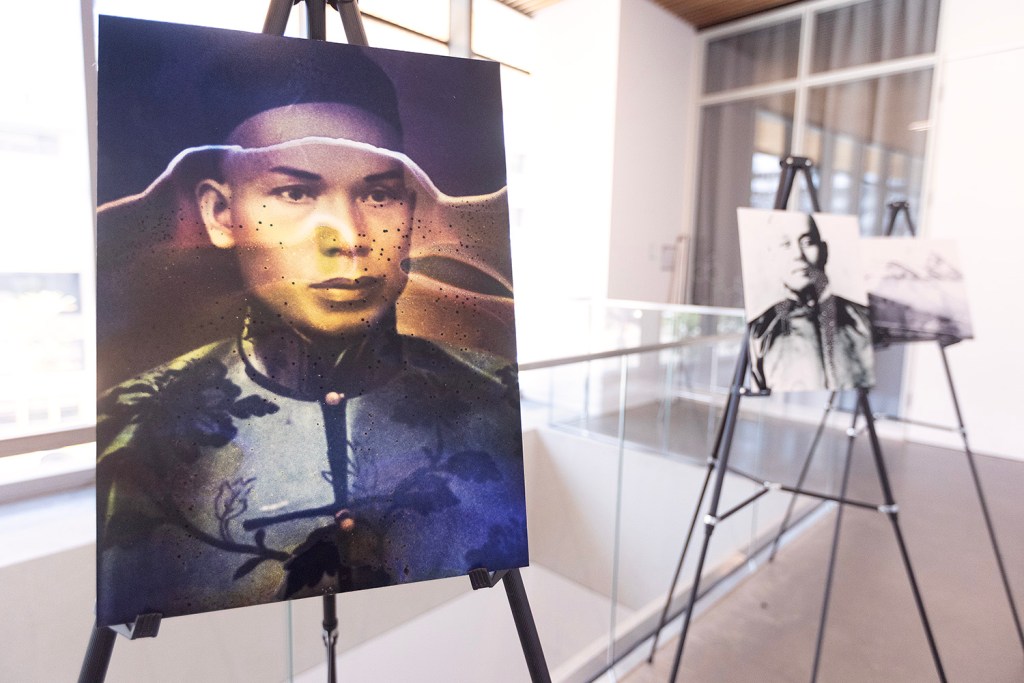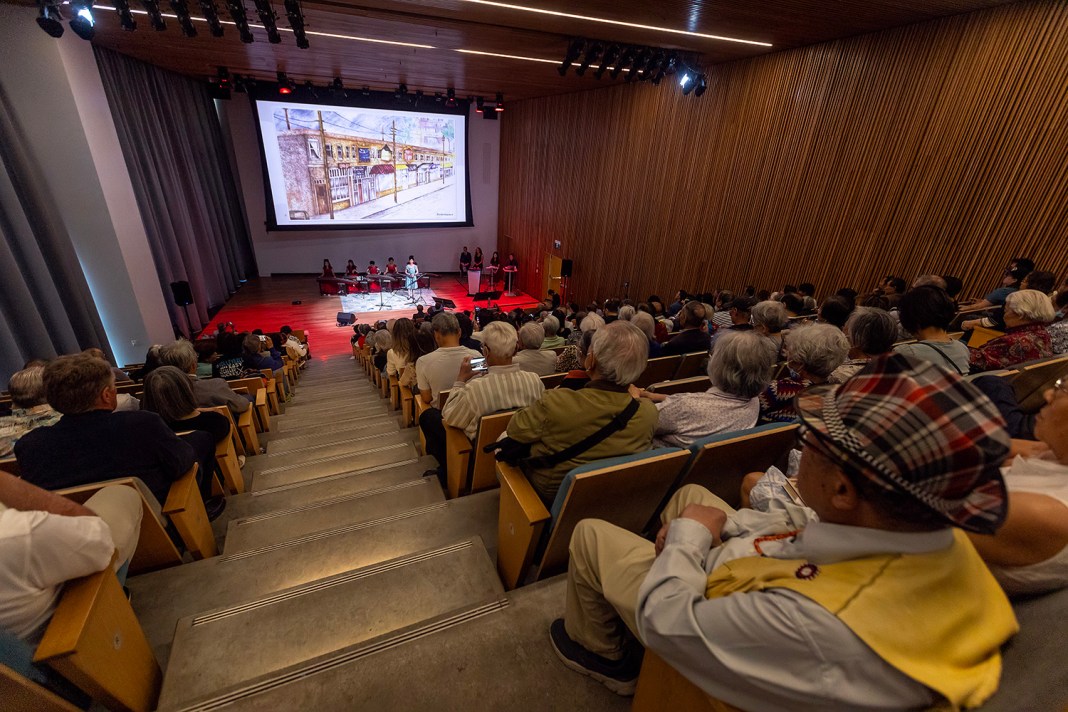A century ago, Canada’s systematic and social racism against people of Chinese descent manifested in the Chinese Immigration Act.
That act, better known as the Chinese exclusion act, went into effect on July 1, 1923, nearly completely ending Chinese immigrants from entering Canada. From the act’s beginning to 1946, just 15 Chinese people were allowed to emigrate to Canada.
Calgary’s Chinese community commemorated the century of the act on Friday at the Central Library, marking the extraordinary efforts that Chinese-Canadians have made in the city to preserve their community and push back against racism.
“We wanted to share the stories of what they have experienced their ancestors, and also to remind the community how we have come across all the hardship,” said Stella Chen, project manager for Reflecting on History, Shaping our Future.
As part of the day of remembrance, Mayor Jyoti Gondek and Ward 7 Councillor Terry Wong recognized prominent Calgarians who have made a difference for the Chinese-Canadian community in the city.
Louie Kheong, Chong Him, Arline Poon, Jack Wong, Alderman George Ho Lem Sr., Raymond Lee, Douglas Tims, Victor Mah, Fei Hong Cheng, Guo Liang Huang, Mayor Ralph Klein, Mayor Al Duerr, Teresa Woo-Paw, Gary Mar, Wayne Chiu, and members of the City of Calgary’s Chinatown cultural plan and area redevelopment plan committees were recognized.
Chen said that it was very important to recognize those people publicly at the event, but also the more than 100 other people that were submitted for recognition.
“It was very important and I have to say it was very difficult as well, just because definitely more than 15 people should be recognized,” she said.
Chen said that alongside Denise Cheng, they poured over the names, interviewed people, and consulted with the different Chinese communities in Calgary to come up with Friday’s recognition list.
Recognizing the past
Coun. Wong, while providing the welcoming to the day’s programming, said that members of the Chinatown community alongside and the City of Calgary were already making steps to address the legacy of anti-Chinese racism in Calgary.
He acknowledged the work that Chinatown community members have done throughout the past decades to save their community, and the more recent work done by members of the Tommorow’s Chinatown committee and the United Calgary Chinese Association to repair headstones in Union Cemetery.
Mayor Gondek took a strong stance against anti-Chinese racism while addressing the symbolism of the day.
“While it was a regretful period, it cannot be forgotten, so that we do not repeat such mistakes of the past,” she said.
“Today, the city and our society is clear that these types of actions will not be tolerated. However, today, we are also intentionally focusing on the good stories and highlighting the many contributions and successes of Chinese-Calgarians for over a century.”
Chen said that those contributions have largely gone on behind the scenes to build and maintain Chinatown.
“Unfortunately, a lot of times they are spending more time in maintaining the proximity of it, and also the businesses that are around Chinatown,” she said.
Dr. Matt Patterson, an Associate Professor of Sociology at UCalgary, spoke about the challenges that Chinatowns—including that of Calgary’s—have faced across North America.
He spoke about some of the challenges that Chinatowns have faced in maintining their existence against external threats, like that of the City of Calgary’s plans in the 1960s to bulldoze Calgary’s Chinatown for a third time in order to build a flyover and expressway.
Other threats come from losing a sense of community through the removal of specific architectures and cultural motifs that are exclusive to Chinatowns.

Art as a way to return dignity to those who had dignity stripped by Act
Raeann Kit-Yee Cheung had some of her works that combined the relatively few photographs of Chinese-Candians building the CPR rail lines on display during Reflecting on History, Shaping our Future.
She said that she began the project to combine these photographs with artistic interpretations in order to preserve a history that was being forgotten.
“When I first started researching—I was in grad school—and I found that there were way more text references about the Chinese Canadian history than there were images. And, particularly with respect to the railroad,” Cheung said.
“Even now, when you go to the library of archives of Canada or big archival institutions, the images of Chinese Canadian railway workers are few and far between, and are mostly not very dignified.”
She said that the imagery she chose was to return dignity to those individuals, and as her work was displayed, it began to incorporate photographs and images from the descendants of those railway workers.
“What I what I really would like viewers take away from it is that, especially with the surge of anti-Asian sentiment lately, I want them to know that ‘hey, look, we we actually were one of the earlier settlers here, and despite the hardships we actually contributed quite a bit,’” Cheung said.
“The next time you think about wanting to make a remark, to not just to Asians, but to any ethnicity, maybe take a look at what they’ve done in the past and how they have bettered your life. Because chances are there was a contribution somewhere.”



